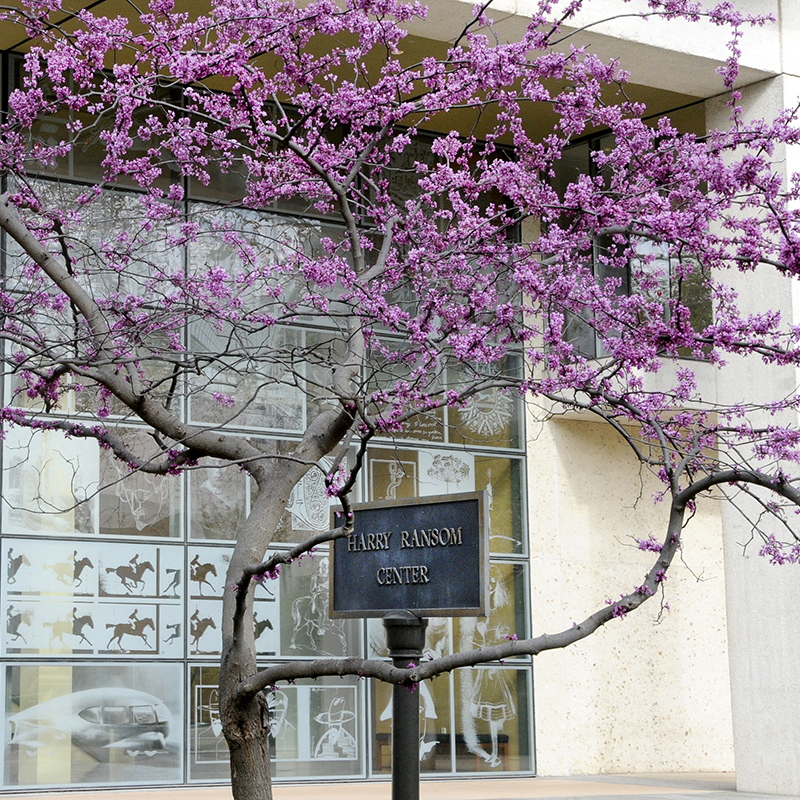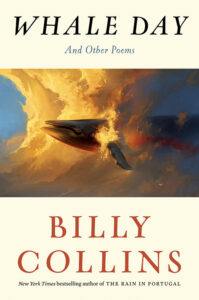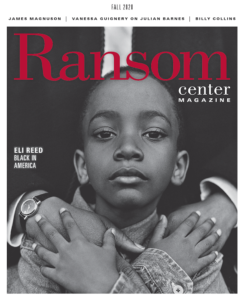
It was not the year we anticipated, hoped for, or a year we would want to repeat. The first rumblings of the COVID-19 pandemic began in early 2020, escalated in February, and eventually erupted in our community in March when the Center closed its doors to in-person visits and staff began working remotely. What happened next was a natural shift to expanding the Center’s online presence throughout the year.

Online support and engagement offered new opportunities to reach beyond Austin, beyond Texas, and truly touch a worldwide audience more reflective of the extraordinary global collections housed at the Center. Enhanced exhibition content was offered on our website, programs went virtual, video content connected viewers with our digital collections like never before, and librarians, archivists, and instructors began offering remote research and teaching support. But in the flurry of shuffling priorities and remote work, the Center and its staff had many highlights in 2020 that we have rounded up here to share with you.
An Historic Exhibition Goes Virtual
This was the year that the first-ever major exhibition based on the papers of Nobel Prize-winning Colombian author Gabriel García Márquez (One Hundred Years of Solitude) opened Feb. 1. Drawing primarily on the papers of García Márquez acquired by the Ransom Center in 2014, this exhibition was comprised of approximately 300 objects, including numerous documents never seen in public before, and was curated by Álvaro Santana-Acuña, assistant professor at Whitman College, and author of the book Ascent to Glory: How One Hundred Years of Solitude Was Written and Became a Global Classic.

When the galleries were closed due to the Coronavirus pandemic, the Center added enhanced content to an online exhibition and shared the writer’s digital archive.
New Visit From Home Options
In an effort to forge deeper connections with our virtual offerings, the Ransom Center launched its Visit from Home web page that allows online visitors to page through the Gutenberg Bible, explore online exhibitions, watch videos or download a Zoom background. Also, readers enjoyed a roundup of digital offerings, from Shakespeare and Brontë to magazine articles and movie posters, and were able to experience the Ransom Center online from wherever they were.
For those who wanted to learn more about the Center, a new #RansomInAMinute video series offered 60-second video introductions to thousands of digital items available online. From notable people like Julia Child, Harry Houdini, and José Guadalupe Posada, to notable collection items like the Victorian Blood Book, One Hundred Years of Solitude, and Leigh Hunt’s Hair Book, these one-minute shorts are an introduction to the world of the Ransom Center. Watch the playlist
A Year of Social Injustice
During the closure, the Center continued to produce its twice-a-year publication of the Ransom Center Magazine. We saw major political and social unrest in 2020 and through an article, “The Camera as a Weapon Against Racial Injustice: Eli Reed’s Black in America,” in the fall 2020 edition written by Dr. Steven Hoelscher, we shared how Magnum photographer and UT faculty member Eli Reed documents the continuing struggle against systemic racism in the U.S.

Also in the fall edition: Vanessa Guignery explored the archive of author Julian Barnes, Greg Curtis interviewed author and former director of the UT Michener Center for Writers James Magnuson. Last spring as we were all headed into lockdown, the Center shared articles about Gabriel García Márquez and an excerpt from Álvaro Santana-Acuña’s book about how García Márquez’s most famous novel became an international success. Read past issues here or become a member and get it in your mailbox.
Thousands Joined Us For Online Programs

A number of programs are hosted at the Ransom Center each year, many of which are available to watch on our YouTube channel. However in 2020, our programming moved exclusively online and thousands of viewers have enjoyed the special conversation held in October with renowned journalist Bob Woodward, followed by programs featuring poet Billy Collins, The Gutenberg Bible, Arthur Miller and Jane Austen, and new curatorial perspectives on Frida Kahlo. The spring 2021 lineup of online programs will be announced soon—signup for eNews, or text ransomcenter to 52855 for text reminders to stay in the know.
Read Whale Day, a new poem by Billy Collins, whose papers reside at the Ransom Center.
We Slowed Down to Explore What is Research?
With our doors closed and researchers accessing materials online, the new Associate Director of Research Dr. Gretchen Henderson launched the What is Research? project during the pandemic, that offered some a time of reflection on the foundational pillar of the Center’s mission: Research. We know research is a common activity that unites and underscores much of academic life and that each discipline practices, interprets, and communicates research differently. This project hopes to “expose porous spaces between our practices that lead researchers, faculty, students, staff, and the public to interpret the collections,” Henderson said. Researchers have shared their personal reflections on how they approach in this series of articles related to the project that will continue through spring of 2021. You can join the conversation at #ransomresearch on our social media channels and let us know: What is Research to You?
We invited scholars, practitioners, and creatives both from in and outside The University of Texas at Austin to highlight underutilized collections in the Ransom Center related to underrepresented communities through an open submission to What is Research? and to be considered for the Diversity Awards for Research Engagement (DARE) of up to $1,000. These will be awarded to submissions to the What is Research? Forum that presents innovative research in support of diversity, equity, inclusion, and accessibility. (Deadline March 1, 2021; earlier submission is encouraged.)
A Map For The Ages
Created by celebrated Dutch cartographer Joan Blaeu in 1648, the enormous 10’ x 7’ map titled Nova totius terrarum orbis tabula is commonly known as the Blaeu World Map. This grand map is composed of 21 hand-printed engraved images that show the known geography of the Earth at that time, along with images of constellations and diagrams of the solar system. For nearly 50 years, the fragile map remained stored away from public view. In 2018–2019, the Center prioritized the conservation treatment of this one-of-a-kind treasure that is part of the Kraus Map Collection at the Center. Our Members and donors answered our call for support, donating more than $50,000 to ensure the map is framed and exhibited to the public. Sign up for eNews and watch for this exciting announcement.
Collecting a Moment in Time
In response to the pandemic, the Ransom Center launched the Theatre 2020 Project to invite theater artists and organizations to register and submit stories about how the events of 2020 have affected them, from the COVID-19 pandemic and subsequent closures and furloughs, to national politics and protests and the experiences of those reckoning with longstanding racial injustices in the industry. This digital collecting initiative will aggregate national and international stories, photographs and videos documenting the experiences of those working in the theater.
Research Must Go On
 The closure of the Center this year did not prevent archivists and catalogers from creating over 100 new or revised finding aids available online and more than 2,000 bibliographic records created or revised. Among the exciting collections cataloged were the Rachel Cusk Papers, the Arthur Miller Papers and the PEN Records, which now feature a digital collection of primary source materials as well as an online educational resource guide.
The closure of the Center this year did not prevent archivists and catalogers from creating over 100 new or revised finding aids available online and more than 2,000 bibliographic records created or revised. Among the exciting collections cataloged were the Rachel Cusk Papers, the Arthur Miller Papers and the PEN Records, which now feature a digital collection of primary source materials as well as an online educational resource guide.
A big THANK YOU to all our Members and Donors who supported us this year. If you are not a Member, find out more about membership, sign up for our monthly eNewsletter, or follow @ransomcenter on social media. We look forward to seeing you in 2021!

